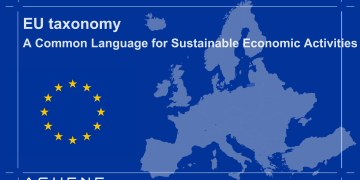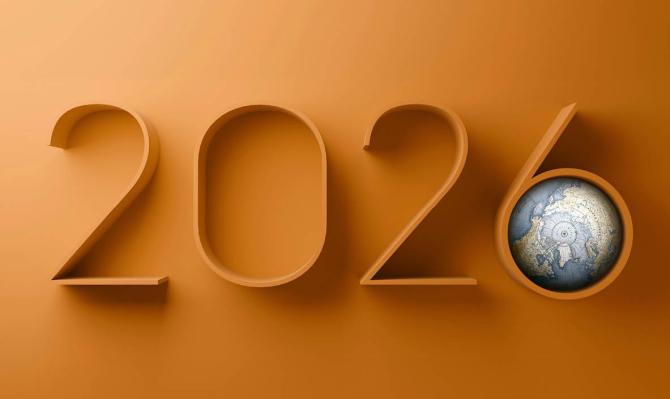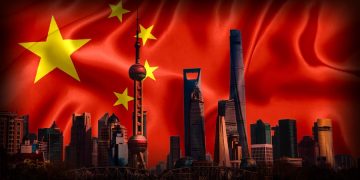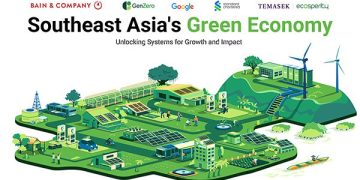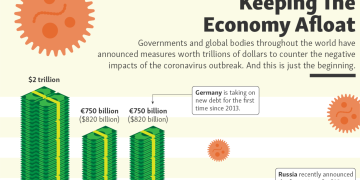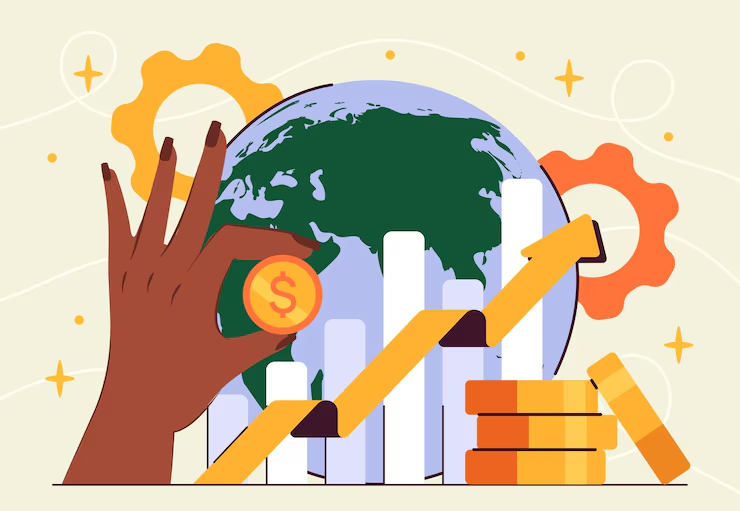How Global Shocks Are Redefining Financial Markets
Introduction: A Financial World Defined by Shocks, Not Cycles
For decades, economists believed inflation was primarily driven by demand cycles that central banks could control with interest rates. Today, that assumption has been overturned by a series of massive, overlapping structural shocks—pandemic disruptions, geopolitical conflicts, energy instability, supply-chain fragmentation, climate volatility, and demographic reversal. Together, these forces have created a new inflation regime that is global, persistent, and rooted in structural real-world constraints.
Unlike the inflation of the 1970s, which was largely a product of oil shocks and monetary mismanagement, today’s inflation is multidimensional. It is driven not only by commodity prices but by energy transition costs, geopolitical rivalry, reindustrialization, chronic underinvestment in critical sectors, and the weaponization of trade.
The financial consequences are profound: central banks are discovering that supply-driven inflation is far harder to tame; governments are spending heavily on industrial policy and national security; corporations are restructuring global footprints; and investors must navigate a more volatile, less predictable macro environment.
This article examines how geopolitics and energy are reshaping global inflation, how markets are adjusting, and what this means for the next decade of global finance.
1. The Return of Geopolitical Pricing Power
1.1 From globalization tailwinds to fragmentation headwinds
From 1990 to 2015, globalization created a powerful disinflationary force. Companies outsourced production to low-cost regions, financial markets became more integrated, and supply chains extended across continents. This era compressed prices and wages in advanced economies and helped central banks maintain stable inflation.
That world is gone.
Since 2018, geopolitical competition has replaced globalization as the dominant economic force. The U.S.–China rivalry, Russia’s invasion of Ukraine, and the fragmentation of global energy routes have replaced efficiency with resilience, and low cost with strategic redundancy.
This shift introduces an inflationary bias to the global economy:
- countries diversify supply chains at higher cost
- governments subsidize onshoring and industrial capacity
- firms increase inventories to protect against disruptions
- trade barriers raise input prices
Inflation becomes structural, persistent, and less responsive to monetary policy.
1.2 Geopolitics turns commodities into financial weapons
Oil, natural gas, rare earth minerals, semiconductors, and agricultural commodities are no longer just economic goods—they have become strategic assets used as leverage. Nations now treat supply security as a matter of national survival. As a result:
- commodity prices swing violently
- geopolitical risks embed themselves into long-term futures contracts
- firms hedge more aggressively, raising costs
- critical resource shortages become chronic
The world has entered a period where geopolitically driven price shocks are the norm, not the exception.
2. Energy Markets: The Core of the New Inflation Era
2.1 The structural energy deficit
Despite rapid growth in renewable energy installations, the world faces a chronic energy investment gap. For nearly a decade, oil and gas producers underinvested due to low prices, strict ESG mandates, and regulatory pressure. Meanwhile, renewable energy expansion, though rapid, cannot yet meet global demand growth.
The result is an unstable energy environment where:
- supply cannot easily respond to demand
- price spikes occur frequently
- energy becomes a long-term inflation anchor
2.2 The Russia–Ukraine war and Europe’s energy transformation
Europe experienced the most dramatic energy shock since the 1970s after Russia cut natural gas supplies. Prices surged more than tenfold, forcing governments to:
- subsidize consumers
- cap energy tariffs
- accelerate LNG imports
- reopen coal plants
- increase renewable capacity targets
Though Europe has stabilized gas supply through diversification, prices remain structurally higher than pre-2020 levels. This affects:
- manufacturing competitiveness
- inflation expectations
- wage negotiations
- industrial investment decisions
Europe’s energy inflation is likely to persist for years.
2.3 The Middle East’s new strategic centrality
The Middle East remains the world’s energy heart, and ongoing regional instability—from Iran-Israel tensions to Red Sea shipping disruptions—creates continuous supply uncertainty. Even small disruptions cause large price swings because global spare capacity is limited.
Energy markets now operate under conditions where geopolitical volatility = inflation volatility.
3. The Inflationary Cost of Energy Transition
3.1 The hidden inflation of decarbonization
The transition to clean energy is economically essential but inflationary in the medium term. Why?
- renewable infrastructure requires massive upfront investment
- critical minerals (lithium, cobalt, nickel) are scarce
- grids need expensive modernization
- fossil-fuel capacity is retiring faster than renewable capacity is expanding
This creates a multi-year period where energy demand outpaces clean energy supply, raising prices.
3.2 Industrial policy and subsidy competition
The U.S. Inflation Reduction Act (IRA), Europe’s Green Deal Industrial Plan, and China’s massive renewable subsidies have created a global subsidy race. Governments are spending trillions to accelerate:
- solar and wind capacity
- hydrogen ecosystems
- battery manufacturing
- semiconductor production
- electric vehicle supply chains
But heavy industrial policy is inflationary because it:
- increases government borrowing
- raises labor demand in high-wage sectors
- creates global competition for scarce materials
- shifts capital to strategic sectors rather than efficient ones
The energy transition is necessary—but markets must adapt to its inflationary side effects.
4. Supply-Chain Reconfiguration: From Efficiency to Security
4.1 The death of “just-in-time”
Before 2020, global supply chains minimized inventory to cut costs. Today, security and redundancy are the priorities. Firms are shifting to:
- “just-in-case” inventories
- multi-route logistics
- localized manufacturing
- near-shoring and friend-shoring
These practices reduce risk but increase cost.

4.2 The U.S.–China decoupling reshapes global trade
Decoupling is transforming global supply chains:
- U.S. restricts high-tech exports to China
- China builds self-sufficiency in semiconductors
- global corporates diversify into Vietnam, Mexico, and India
This reallocation is inflationary in the transition phase, as companies operate overlapping supply chains before old systems can be dismantled.
4.3 Logistics become a permanent inflation source
Geopolitical disruptions—such as Red Sea tensions, Suez Canal bottlenecks, and global sanctions—have pushed shipping costs back to pandemic-era highs. Since 90% of global trade moves by sea, higher logistics costs feed directly into global inflation.
5. Labor Markets: Demographics and Bargaining Power
5.1 Aging societies = tight labor markets
The world’s major economies are aging rapidly:
- U.S. workforce growth is slowing
- Europe faces chronic labor shortages
- Japan’s working population is in permanent decline
- China has entered demographic contraction
A shrinking labor force gives workers greater bargaining power, raising wages and embedding inflation.
5.2 The rise of wage–price persistence
Unlike the 2010s, wages are now rising in line with inflation. Countries face:
- stronger union demands
- higher minimum wages
- worker shortages in logistics, healthcare, manufacturing
Wage growth no longer automatically cools when inflation falls, making inflation sticky.
6. Central Banks Struggle With Supply-Driven Inflation
6.1 Monetary policy cannot fix supply shocks
Traditional monetary tools work by reducing demand. But today’s inflation comes primarily from:
- energy shortages
- geopolitical shocks
- supply-chain restructuring
- climate disruptions
- labor scarcity
Central banks can suppress demand but cannot increase:
- oil supply
- semiconductor production
- shipping capacity
- mineral extraction
- renewable generation
- working-age population
This creates a structural mismatch: monetary policy is fighting a supply-driven world with demand-driven tools.
6.2 Higher neutral rates
Economists now believe the “neutral rate”—the interest rate consistent with stable inflation—is higher than in the 2010s. This means:
- interest rates will stay elevated
- central banks cannot easily return to zero
- government borrowing costs rise
- asset valuations adjust downward
We have entered a world of structurally higher interest rates.
7. Financial Market Implications
7.1 Bonds: end of the 40-year bull market
After four decades of falling yields, bond markets are adjusting to:
- higher inflation expectations
- stronger term premiums
- reduced central bank intervention
- rising fiscal deficits
Long-duration bonds are vulnerable to further repricing.
7.2 Equities: sector rotation accelerates
Beneficiaries of the new inflation regime:
- energy producers
- defense and aerospace
- industrial automation
- AI and semiconductor firms
- commodity-linked sectors
Losers:
- unprofitable tech
- interest-sensitive real estate
- overleveraged firms
- consumer discretionary sectors
7.3 Commodities regain strategic relevance
Commodities are once again a strategic inflation hedge, driven by:
- underinvestment
- geopolitical disruptions
- energy transition demand
- supply shortages
The commodity supercycle is not guaranteed, but conditions are favorable.
8. The Next Decade: What the New Inflation Regime Means
8.1 Inflation will be higher and more volatile
Not necessarily runaway inflation, but:
- persistent 3–4% baselines
- frequent supply-side shocks
- geopolitical price spikes
The “low and stable inflation” era is over.
8.2 Investment strategies must adapt
The new environment favors:
- real assets
- short-duration credit
- value stocks
- energy and industrial companies
- commodities
- geopolitical risk hedging
8.3 Governments will shape markets more aggressively
Expect more:
- industrial policy
- subsidies
- export controls
- capital controls
- strategic resource stockpiles
The state is back at the center of economic life.
Conclusion: A Financial World Defined by Structural Forces
The global inflation environment is no longer cyclical—it is structural, driven by the deep forces reshaping the modern world:
- geopolitical fragmentation
- energy transition
- supply-chain reconfiguration
- demographics
- climate shocks
- industrial nationalism
These forces will define global finance for the next decade. Investors, policymakers, and companies must adapt to a world where inflation is persistent, volatility is normal, and geopolitical risk is a core financial variable.
This is not a temporary disruption. It is the beginning of a new global macro era.
















